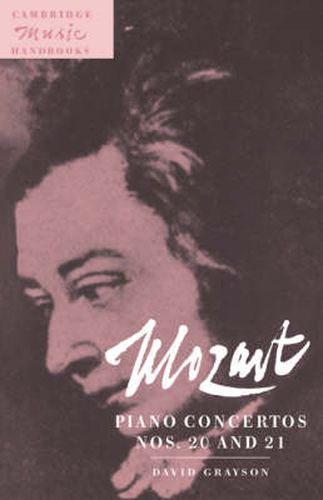Readings Newsletter
Become a Readings Member to make your shopping experience even easier.
Sign in or sign up for free!
You’re not far away from qualifying for FREE standard shipping within Australia
You’ve qualified for FREE standard shipping within Australia
The cart is loading…






This guide to Mozart’s two most popular piano concertos - No. 20 in D minor, K. 466, and No. 21 in C major, K. 467 - the so-called ‘Elvira Madigan’ - presents the historical background of the works, placing them within the context of Mozart’s compositional and performance activities at a time when his reputation as both composer and pianist was at its peak. The special nature of the concerto, as both a form and genre, is explored through a selective survey of some of the approaches that various critics have taken in discussing Mozart’s concertos, ranging from pure formalism to interpretations of the works as wordless human dramas. The advancement of a theory of concerto form provides the background for detailed accounts of the two concertos. The concluding chapter discusses a wide range of issues of particular interest to modern performers, including historical instruments, orchestra size and seating, cadenzas, and improvised embellishment.
$9.00 standard shipping within Australia
FREE standard shipping within Australia for orders over $100.00
Express & International shipping calculated at checkout
This guide to Mozart’s two most popular piano concertos - No. 20 in D minor, K. 466, and No. 21 in C major, K. 467 - the so-called ‘Elvira Madigan’ - presents the historical background of the works, placing them within the context of Mozart’s compositional and performance activities at a time when his reputation as both composer and pianist was at its peak. The special nature of the concerto, as both a form and genre, is explored through a selective survey of some of the approaches that various critics have taken in discussing Mozart’s concertos, ranging from pure formalism to interpretations of the works as wordless human dramas. The advancement of a theory of concerto form provides the background for detailed accounts of the two concertos. The concluding chapter discusses a wide range of issues of particular interest to modern performers, including historical instruments, orchestra size and seating, cadenzas, and improvised embellishment.